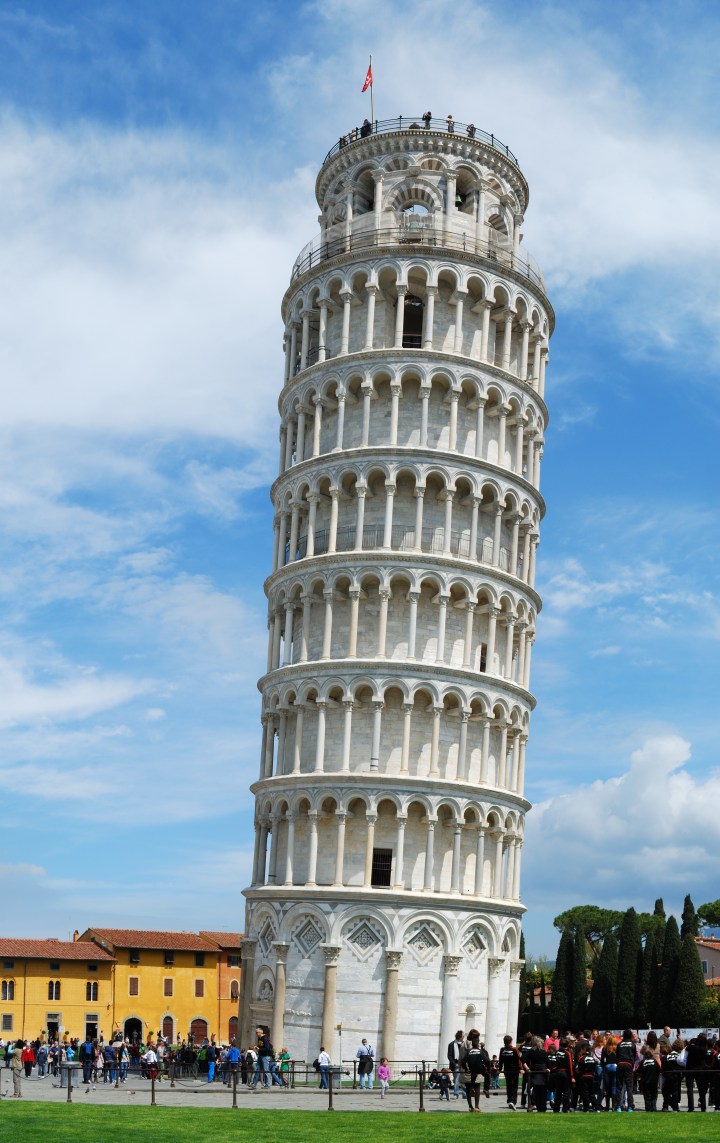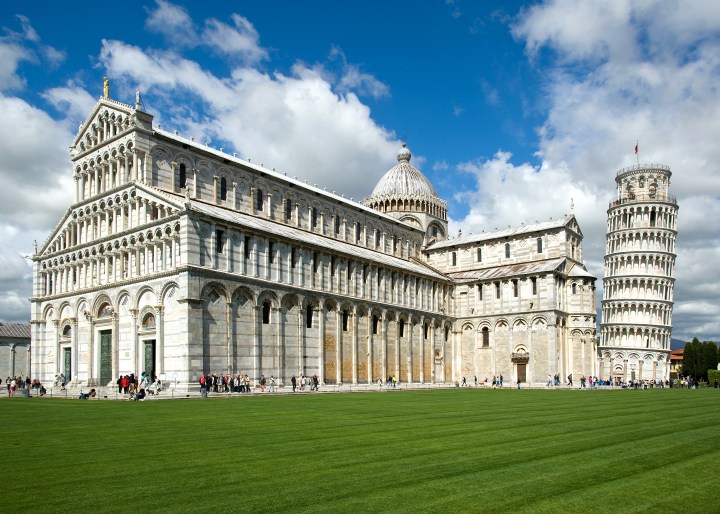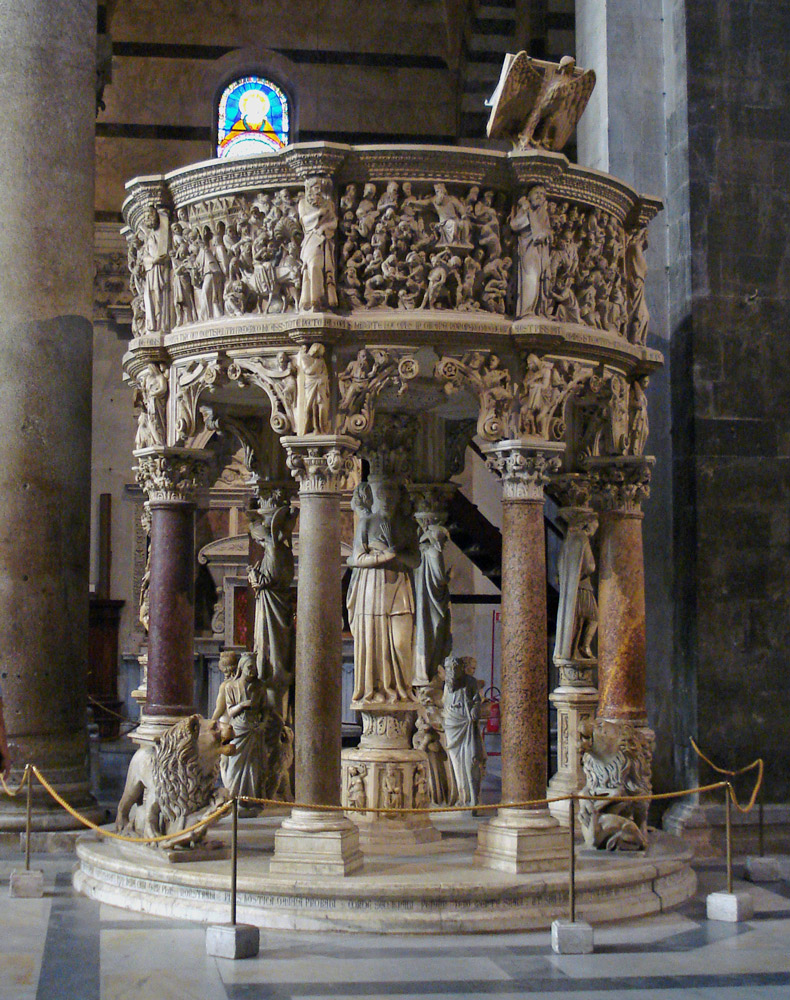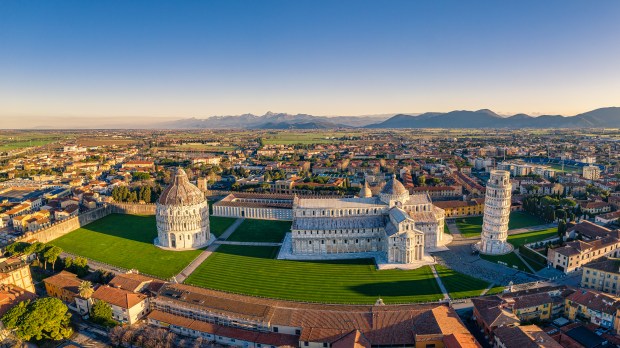The Tuscan city of Pisa is renowned throughout the world for its association with a major architectural blunder. Yet, there is more to Pisa than the Leaning Tower. It is just one of four important religious sites in the center of the old city. The others include the duomo (cathedral), baptistery, and monumental cemetery.
These four monuments are located in what is known as the Piazza dei Miracoli, the Square of Miracles. Its name comes from a phrase in a novel by the Italian poet and writer, Gabriele D’Annunzio: “The Ardea spun in the sky of Christ, on the field of the Miracles.” The “field” eventually became known as the “square.”
The Leaning Tower
The Leaning Tower is instantly recognized as not just a symbol of Pisa, but of Italy. It was designed as a bell tower.

In the Middle Ages, bell towers were regularly constructed alongside important churches. Their purpose was to signify religious functions and mark the passing of the hours with the tolling of the bells. In the large Italian cities, rivalries developed between neighboring cities. They competed with one another to build the most impressive cathedrals and bell towers. Pisa’s arch rival was Florence.
Construction on Pisa’s bell tower began in 1166. In 1171, when the three lower rings had been completed, it was recognized that the tower was sinking on the south side. Engineers concluded it was due to weak subsoil and a poor foundation. Construction stopped for one century to allow the soil to solidify. When building resumed, subsequent rings were built with the south side higher than the north in an attempt to straighten the tower. This resulted in a slight curvature.
The seventh and final floor was completed in 1319. At that time, the tower tilted approximately one degree, or 80 cm (2.5 feet). In 1990, the measured tilt had increased to a whopping 5.5 degrees. To save the tower from collapse, it was closed for two decades for renovations.
In 2010, it was reopened to the public. Today, while visitors climb the 294 steps to the top, they don’t lean quite so much, as the tilt was reduced to approximately four degrees.
Cathedral
To the west of the tower is the Cathedral of Santa Maria Assunta. Built with Byzantine and Arab influences, it was a masterpiece in Pisan Romanesque style.

The opulent cathedral was a testament to the prestige and wealth of the maritime republic of Pisa at the height of its glory. The white and gray marble facade is rich in detail, and its black and white marble interior matches the ceiling covered with gilded wood coffers. The apse with mosaics by Cimabue and the pulpit are considered masterpieces of Italian Gothic architecture.

The Baptistery
In previous eras, cities used designated baptisteries where all baptisms took place. Facing the façade is the massive baptistery dedicated to St. John the Baptist. With a circumference of 107.24 meters and a height of almost 55 meters, it is the largest baptistery in all of Italy. Inside, there are important sculptures including a pulpit, baptismal font, and a bronze of St. John the Baptist.

The Monumental Cemetery
To the north of the other three buildings is the Campo Santo, also known as Camposanto Monumentale (monumental cemetery). The most recently constructed building of the four in the Square of Miracles, it was conceived as burial grounds for the Pisa’s most illustrious citizens. Pisan crusaders, upon returning from the Holy Land, brought sacred soil with them from the church of the Holy Sepulchure in Jerusalem for the site.

Other sites
There are two museums in the vicinity of the Square of Miracles. The first is the Sinopia Museum. Due to bombings during World War II, the Monumental Cemetery suffered significant damage to its roof leading in turn to damage to a cycle of medieval frescoes. During restorations to the art, “sinopias” – preparatory drawings in red ocher underlying the frescoes – were discovered. These preparatory drawings were moved to the museum.
Also of note is the Opera del Duomo Museum, which houses a splendid collection of Pisan works from the 11th and 14th centuries. It also contains the treasure of the cathedral, statues, and discoveries made during restoration from the monuments.

